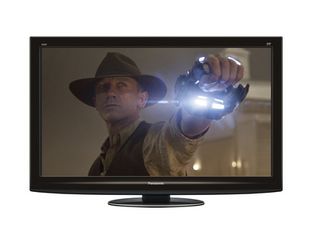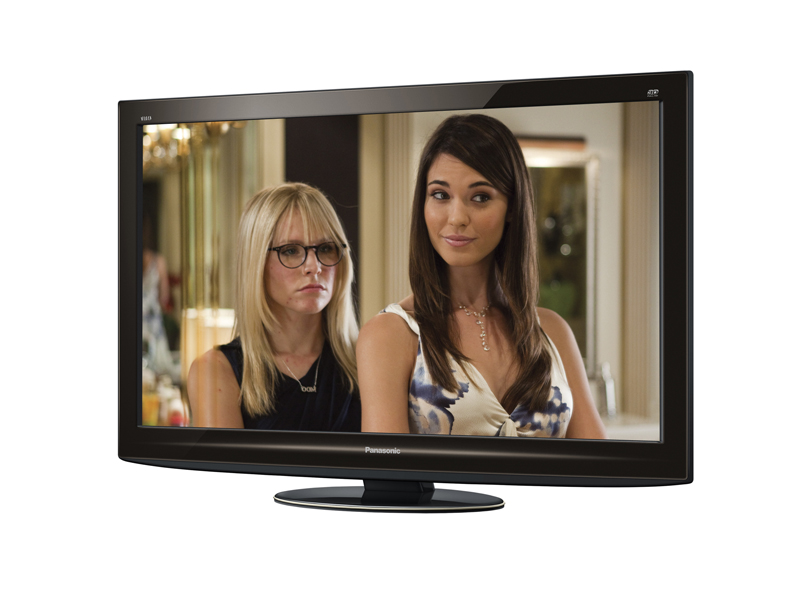Why you can trust TechRadar

Heading straight for the P42GT20's 3D capabilities, two things are immediately striking, one good, one not so good. The not so good thing is that the immersive impact of 3D seems reduced by the relative smallness of the P42GT20's screen. This isn't exactly the TV's fault, of course, but it's a point worth raising to anyone who isn't likely to end up sat very close to his or her TV.
The (very) good thing is the almost complete absence of the dreaded crosstalk interference. This double ghosting phenomenon has damaged if not outright ruined the 3D pictures of all LCD-based 3D TVs we've seen, so finding it only appearing rarely and subtly on the P42GT20 is a boon.
In fact, it makes 3D footage look more convincing, crisper (at least where edges of middle to distant objects are concerned), and much less tiring during long-term viewing than on LCD.
Contrast
The P42GT20's black level response helps it deliver a well-defined sense of depth and naturalism with 3D footage too, and even the 2D to 3D conversion is fairly impressive. It doesn't deliver as great a sense of depth as Samsung's conversion engine, but it makes hardly any depth mistakes, so that it ends up with a convincing, if shallow, 3D effect.
The set doesn't have everything its own way with 3D, though. With the current generation of glasses pictures lose a really considerable amount of brightness versus their 2D counterparts. This can lead to colours looking slightly muted versus a typical LCD 3D colour palette.
Motion response
Finally, despite the P42GT20 suffering less resolution loss when showing moving video than any LCD screen, its 3D pictures look a touch soft versus the detailed efforts of most 3D LCD TVs – except for when those LCD screens have their perception of sharpness distractingly dented by crosstalk noise.
The choice is effectively between the brighter, more colour-rich images of 3D LCD TVs and the generally crosstalk-free images of this Panasonic TV.
The P42GT20's 2D pictures, meanwhile, are very good and slightly disappointing at the same time. Which is to say that they're very good compared with the majority of flat 42in TVs out there, but noticeably less awesome than the pictures noticed by Panasonic's V20 and VT20 models previously.
The main reason for this slightly mixed report is the set's black level response. While the P42GT20 can produce richer, deeper blacks than the vast majority of 42in LCD TVs and doesn't lose contrast when watched from a wide angle dark areas look slightly greyer than they do with Panasonic's V and VT20 TV models.
This difference is backed up by sporadic issues with the P42GT20's colours, at least when watching standard definition. They are not as vivid as the V/VT20 models – or the majority of LCD TVs, come to that – and this occasionally tips colour tones into slightly unnatural territory again when watching standard definition material.
Colours hold up much more credibly when watching high-definition; in fact, with HD they are impressively subtle and believable.
Hi-def 2D pictures are sharp and detailed and while traces of judder sometimes try to diminish the clarity, the impact of this is not as severe as the resolution loss often caused by the response time problems of LCD screens.
You can remove most of the judder with Panasonic's Intelligent Frame Creation system, but this can throw up a few side effects and leave images looking slightly unnatural, at least when using one of its higher settings.
One other slight niggle is the appearance of some minor fizzing noise during camera pans while watching standard-definition pictures.
Weighing up all the pros and cons of the P42GT20's pictures, though, the balance lies very strongly in favour of the pros.
Current page: Panasonic TX-P42GT20: Picture quality
Prev Page Panasonic TX-P42GT20: Features Next Page Panasonic TX-P42GT20: Sound, value and ease of useJohn has been writing about home entertainment technology for more than two decades - an especially impressive feat considering he still claims to only be 35 years old (yeah, right). In that time he’s reviewed hundreds if not thousands of TVs, projectors and speakers, and spent frankly far too long sitting by himself in a dark room.

Testing Samsung's new AI-powered vacuum taught me that I don't really need my vac to be know the difference between every single surface

I’ve used a lot of power banks, but the Baseus Blade Pro is the only one slim enough for my laptop sleeve

This is the world's first Thunderbolt 5 LTO tape drive and I can't understand why it exists in the first place









